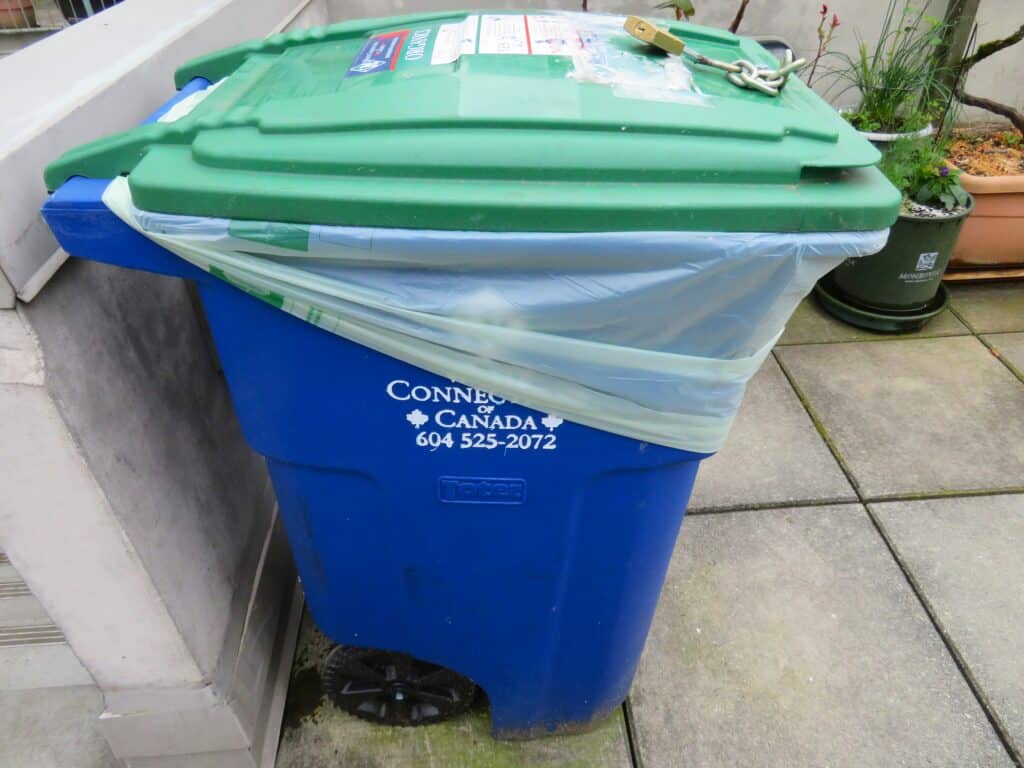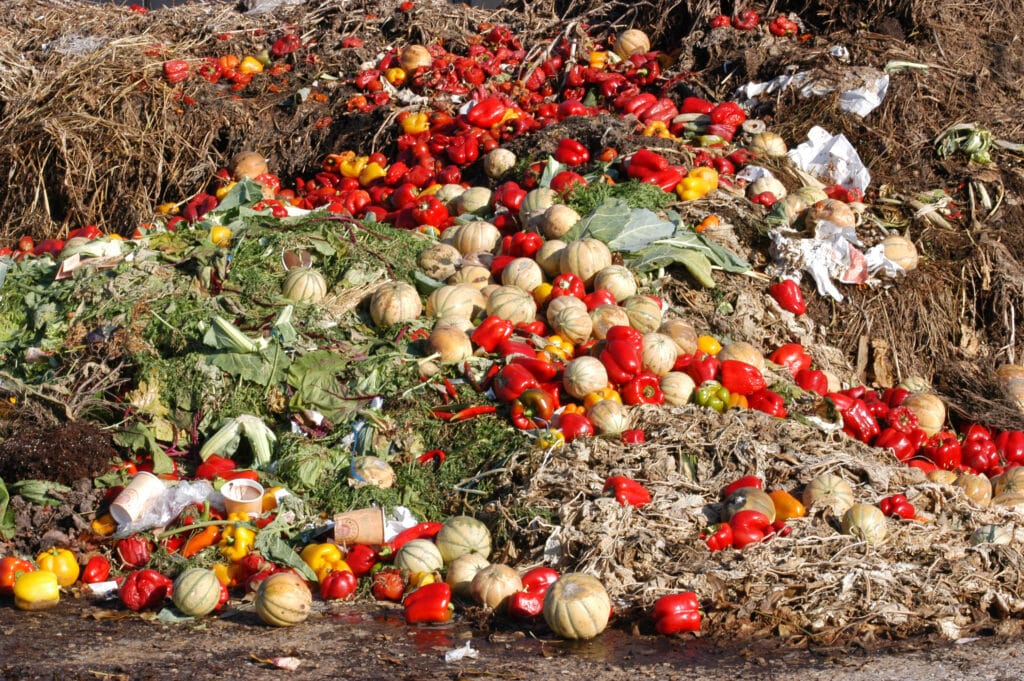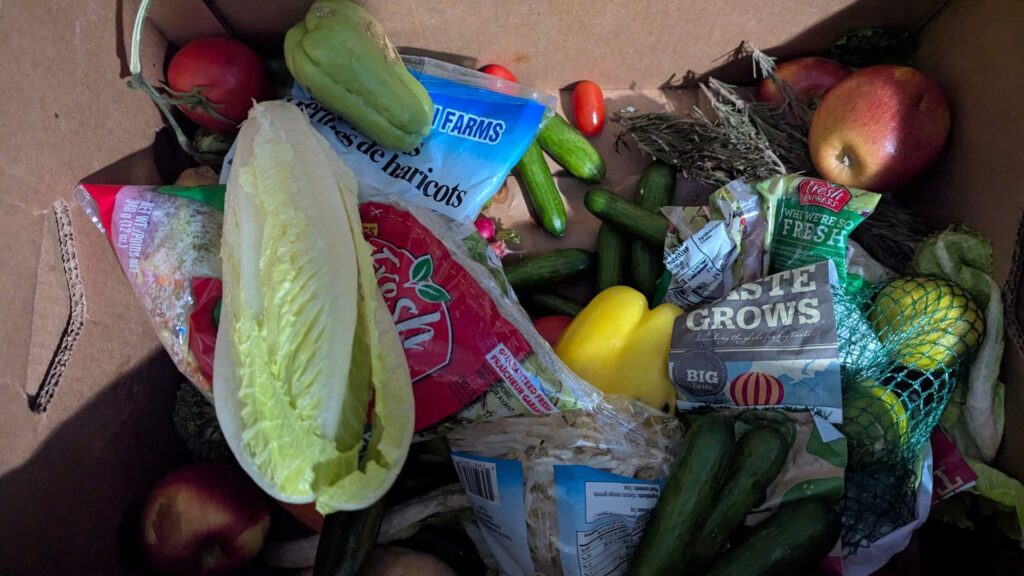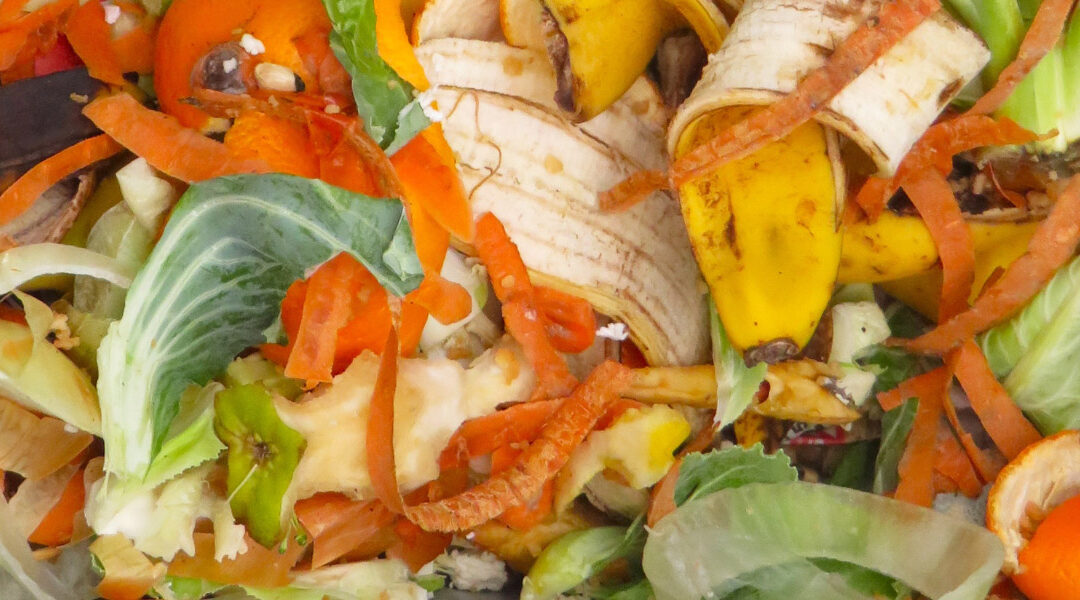Have you ever thrown out a soggy goo of rotting vegetables lurking on a shelf in the fridge? Well, I have. Add to that, other unsettling discoveries – jars of sauces and other food ingredients well past their expiry date, leftovers now sprouting colourful strands of bacteria and food that never gets cooked. One might describe my approach to storage as a classic failure in food management inventory.

That said, I’ve been trying to change my ways – buying local, fresh food and in smaller quantities and composting whatever parts of fruits and vegetables are not used. What’s also inspired me is a growing appreciation of the link between food waste and its impact on the climate crisis. It turns out that nearly half of food produced in Canada is wasted every year with 21 percent of that loss happening in homes.
When food rots in a landfill, it produces large amounts of methane, a greenhouse gas that is 25 times more potent than carbon dioxide. According to the National Zero Waste Council, $49 billion worth of food is sent to landfills or composted each year in Canada. If the value of inputs required to grow this food were included, such as water, power, labour, etc., the dollar figure would rise to over $100 billion.

“If food waste was a country it would be the third largest emitter of greenhouse gases behind only China and the U.S.,” says Benoit Liegey. “It’s a lot of money and a lot of environmental impact too because overall food waste amounts to 8 to 10 percent of greenhouse gas emissions.”
Liegey who was raised and educated in France where he studied food and environmental sciences, has worked in the food sustainability sector for over 10 years. Now, a food waste management consultant in Vancouver, he advises hotels, restaurants, medical facilities and universities on how to reduce food waste and save money.
His company, BetterTable, conducts what he calls food audits where all aspects of a business food service including the kitchen are examined.
“We do a food efficiency assessment to identify where food waste is happening, and when and why it is happening. I’ve seen where hotels just throw away food waste. Lots of food is left over from hotel conferences, meetings, buffets, plate food.”
From his experience, Liegey says uneaten food on guests’ plates can represent anywhere from 20 to 90 percent of total waste in a restaurant.
“For an average restaurant in B.C. about $50 thousand a year is going into the trash.”
Whether it’s in a commercial kitchen or at a restaurant table, there are many reasons for food waste – overproduction of food, spoiled ingredients, poor inventory, throwing food out prematurely, etc.
In order to improve their bottom line some eating places including one of Liegey’s clients, a hotel restaurant in Victoria, are now selling surplus food at one-third the price, using the Too Good To Go app.

Liegey is using technology, video and data to get across his message. On one front, he is creating a quick survey to help people in homes cut down on their food waste and on another; he is working with the Regional District of North Okanagan which includes the towns of Vernon and Armstrong to develop an app for automating food audits.
“It will be used by a restaurant without me going there. The long term goal is to be able to do this also in home kitchens.”
Testing of the app will start in September with the service initially being offered free to 10 restaurants in the region.
Liegey is also helping Metro Vancouver in its goal of a 50 percent reduction in food waste by 2030. As chair of the federation’s Food Working group, he has changed how the organization better measures food waste diversion from the landfill. And while he says redistribution of food through agencies such as Vancouver Food Runners and composting by the general population are important, the key is preventing waste in the first place.

The good news is that according to the Canadian Food Sentiment Index, 76.6 percent of Canadians are actively trying to reduce food waste.
It’s a belief that inspired Liegey to travel around the world for 18 months before moving to Vancouver. He immersed himself in a variety of food cultures while travelling across Europe through to Russia, China and Southeast Asian nations before visiting Australia and New Zealand.
His global adventure would later inform his thinking in the production of a documentary film on the subject of food.
“Public awareness of food waste is extremely low. I was inspired to make this film because of this knowledge gap about the impact of food waste on the climate crisis.”
The documentary, entitled ‘Food Synergy,’ was co-produced by Liegey and explores how sustainable food systems can be a reality today. Mainly set in B.C, the film profiles grocers and other retail operators, farmers, processors, redistributors and non-profit groups who are making a difference in the massive food supply chain.
“I have been working in sustainability throughout my life and if I hadn’t watched specific documentaries I wouldn’t be where I am today.”
Audience reaction to the film which premiered last November in Vancouver has been positive and has been publicly screened at events in Metro Vancouver.
“Many sustainability documentaries are like doom and gloom, end of the world. There’s a place for that storytelling but I wanted to push good ideas. You need to have people who are constructive, to move forward with positive solutions.”
Benoit Liegey is one of those people.
As the film’s website states, ‘Food Synergy’ demonstrates that while food loss is a global issue, innovative solutions can inspire worldwide change.
Photo Credits:
Feature image: Food waste, Bill Stovin
Photos in article: Green waste bin, Bill Stovin; Food rotting in landfill, Adobe Stock; Benoit Liegey, Food Synergy movie https://www.foodsynergymovie.ca/the-film-makers; Rescued food, LK

Bill Stovin is a retired journalist with a long career at CBC-TV and radio and in private radio as well as a former Communications Director in government.


